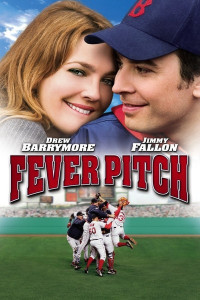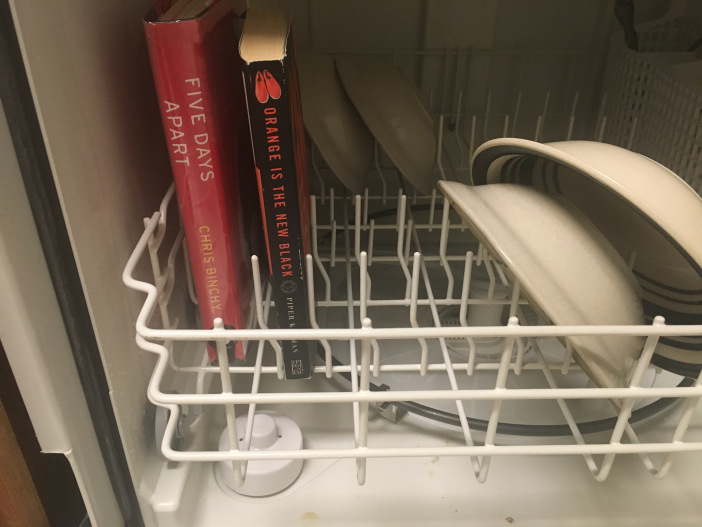Hello there! This is another entry in our blog series Tim’s Cover Story Goes to the Movies. In these posts, we review a rock and roll tune that features prominently in a film.
This week’s entry is Sweet Caroline. This is a pop song from Neil Diamond with a catchy ‘hook.’ We will discuss the movie Fever Pitch, which featured the song. We will then review covers by Bobby Darin and by Roy Orbison.
Neil Diamond and Sweet Caroline:
We have previously discussed Neil Diamond in an earlier blog post on his song Red Red Wine, and another post on his song I’m A Believer. Here we will briefly review Neil’s life and career.
Neil Diamond is a pop singer-songwriter superstar. His records have sold over 135 million copies over a 50-year career, and he has won a series of major music awards.
Diamond was born in Brooklyn in 1941, the son of Polish and Russian immigrants. He attended Erasmus High School in Brooklyn, where he was a member of the school’s Chorus and Choral Club along with classmate Barbra Streisand.
While he was in high school, Neil attended a summer camp in the Catskills where he experienced a concert by legendary folksinger Pete Seeger. This inspired Diamond to buy a guitar and become a songwriter.
Neil enrolled in New York University on a fencing scholarship. However, he began cutting pre-med classes to hang out at the Brill Building, where he attempted to sell his pop songs. In his senior year at NYU, he was offered a 16-week job at $50/week to write songs for Sunbeam Music Publishing. Neil took the job and dropped out of college.
Diamond’s first big successes were as a songwriter. In late 1965 he wrote a hit song that Jay and the Americans released, and then “I’m a Believer” and several other Monkees hits.
On the basis of his songwriting success, Neil Diamond signed a record contract with Bert Berns’ Bang Records in 1966. There, he hit paydirt as a singer with songs such as Solitary Man, Cherry, Cherry and Kentucky Woman.
Below is a photo of Neil Diamond performing in 1970.
Embed from Getty ImagesEventually, Diamond and Berns clashed over his musical direction. Diamond wanted to write deeper, more introspective songs while Berns wanted catchy pop tunes. Shortly after the release of his second album, Neil Diamond attempted to leave Bang Records; however, a series of lawsuits ensued.
It took Neil a couple of years and a dip in his career to resolve his situation with Bang Records, but in 1968 he signed a contract with what is now Universal Records. And then Neil was off and running. He hit it big with songs like Sweet Caroline, Cracklin’ Rosie and Song Sung Blue.
The song Sweet Caroline was written in 1969. Neil has claimed that he was inspired by seeing a magazine photo of a very young Caroline Kennedy riding a horse. In any case, the song has become exceptionally popular.
In addition to the covers discussed here, Sweet Caroline has been covered by artists such as Elvis, Frank Sinatra, Andy Williams, Julio Iglesias, Waylon Jennings and the Dave Matthews Band.
The song is a celebration of the singer’s relationship with Caroline. He is amazed at his good fortune to have found a soul mate with whom he shares so much.
Where it began, I can’t begin to knowing
But then I know it’s growing strong
Was in the spring
Then spring became the summer
Who’d have believed you’d come along
Hands, touching hands
Reaching out, touching me, touching you
[CHORUS] Sweet Caroline
Good times never seemed so good
I’d be inclined
To believe they never would
Here is a live performance of Sweet Caroline by a young Neil Diamond.
.
It’s great to see Neil belting out such a good-humored tune. The melody is extremely catchy, and makes you want to sing along.
Neil Diamond went on to become a pop superstar. However, in 1979 he collapsed onstage in San Francisco and endured a 12-hour operation when a tumor was found on his spine. After a significant period of rehab, Diamond then starred in a remake of the Al Jolson movie The Jazz Singer.
2011 was a significant year of honors for Neil Diamond. He was inducted into the Rock and Roll Hall of Fame, and later that same year he received a Lifetime Achievement Award at the 2011 Kennedy Center Honors.
So, to Neil Diamond and his legion of fans, we say “Neil, good times never seemed so good [so good, so good, so good].”
Sweet Caroline and the film Fever Pitch:
The film Fever Pitch was a 2005 movie directly by the Farrelly brothers, and starred Jimmy Fallon and Drew Barrymore. The plot was taken from the 1997 British movie of the same name; that movie was itself based on Nick Hornby’s 1992 memoir, Fever Pitch: A Fan’s Life.
Nick Hornby wrote the screenplay for the British film, and he was an executive producer of the American remake. While the original book and movie were about a fan’s obsession with association football (soccer), the American film is based on baseball.
Hornby’s book centers on a dramatic last-second win by Arsenal over Liverpool to win the 1989 League title. In order to win, Arsenal had to beat heavily-favored Liverpool by at least two goals while playing at Liverpool. Arsenal scored the clinching goal with less than a minute remaining in stoppage time.
In similar fashion, the American movie features the surprise World Series victory by the Boston Red Sox in 2004. At left is the movie poster for Fever Pitch. It is interesting that the title of the novel did not have to be changed for the movie, despite the fact that for Hornsby “pitch” referred to a soccer field or pitch, while in baseball “pitch” carries a totally different connotation.

Poster for the 1992 baseball movie Fever Pitch.
Here is a brief summary of the plot of Fever Pitch. Ben Wrightman (Fallon) is an obsessed Red Sox fan. Ben’s uncle left him Red Sox season tickets when he died, and Ben’s entire home is filled with Sox memorabilia.
Ben meets successful executive Lindsey Meeks (Barrymore), a workaholic with little interest in sports. However, she is attracted to Ben after their first date; when Ben arrives to pick her up Lindsey is suffering from food poisoning, so Ben cares for her and sleeps on her couch to make sure that she recovers.
The plot then meanders through familiary territory — Lindsey endeavors to absorb details about baseball, while Ben tries to prove that his affection for Lindsey is more important than his obsession with his team.
The pair encounter obstacles to their relationship. Lindsey brings her laptop to a Red Sox game and is hit in the head by a foul ball as she is not paying attention to the game. Later, immediately after Ben and Lindsey make love, Ben gets a phone call informing him that he missed an historic comeback by the Red Sox. Lindsey is upset as it appears that Ben is more interested in his team than her, and the two separate.
To demonstrate his love for Lindsey, Ben agrees to sell his Red Sox season tickets. When Lindsey finds out about this, she rushes to the ballpark to stop Ben from finalizing the deal. In order to reach Ben, Lindsey jumps down and runs across the playing field to prevent him from selling his tickets.
She is successful, and the pair kiss while fans cheer them on. Of course, this occurs at a crucial moment in the Yankees-Red Sox playoff, when the Sox are trailing 3 games to none and are in their final inning.
Here is a video clip of Neil Diamond’s song Sweet Caroline. It contains a series of clips from the movie Fever Pitch.
As you can see, the video clip more or less reviews the entire movie plot. A fascinating side-note is that the original script had the Red Sox losing in the playoffs. After all, the screenplay was written at a time when the Sox had not won a World Series in over 80 years; so it made sense that the Sox would lose at some stage in the playoffs.
In the 2004 regular season the Red Sox lost their division to the Yankees by 3 games, but made the playoffs as a wild-card team. They lost the first 3 games of a 7-game playoff to the Yankees and trailed in the final inning of the 4th game, before coming back in miraculous fashion to beat the Yankees in 7 games. The Sox then swept the St. Louis Cardinals in 4 games to win the World Series.
Because the tune builds up slowly to a rousing chorus, Sweet Caroline has become a feel-good tradition that fans sing at many different sporting events. For example, the tune was regularly played at Penn State football games, although this was halted following the Jerry Sandusky sexual abuse revelations. It is also played at University of Pittsburgh home football games.
Sweet Caroline is also played by the North Ireland national soccer team, by the Sydney Swans Australian Football League team, and at English T20 cricket matches.
However, the most famous example occurs during Boston Red Sox games. The song is played in the middle of the 8th inning of every Sox home game. After “Sweet Caroline,” the crowd belts out “Oh oh oh,” and after “good times never seemed so good,” they sing “so good, so good, so good.”
Here is video of the Fenway Park crowd singing along to Sweet Caroline.
Isn’t this fun? The crowd really gets into the chorus with “Sweet Caroline.” Anyway, Red Sox fans singing Sweet Caroline were a recurring theme in the movie Fever Pitch.
Fever Pitch was a moderate commercial and critical success. The movie garnered a worldwide gross of about $50 million, and has a 65% rating on Rotten Tomatoes. The original choice for lead actress was Gwyneth Paltrow, however she turned down the script and was subsequently replaced by Drew Barrymore.
Jimmy Fallon played the male lead in the film despite the fact that he is a New York Yankees fan. For his role in this movie he was awarded an honorary membership in Red Sox Nation, because of his convincing portrayal of a Red Sox fanatic.
Bobby Darin and Sweet Caroline:
Bobby Darin was born Walden Robert Cassotto in East Harlem in 1936, and he had an unusual childhood. His mother Nina had gotten pregnant at the age of 17. At that time illegitimate children faced a potentially serious stigma.
So Nina and her mother Polly Cassotto hatched a plan whereby Polly raised Bobby while passing Nina off as Bobby’s sister. Bobby was not told of this subterfuge until 1968, when he was 32 years old. Apparently he was devastated by this revelation, which haunted him for the remainder of his life.
At a young age, Bobby showed great musical talent. He played several instruments, including piano and guitar. Bobby’s family then moved to the Bronx and he graduated from the Bronx High School of Science.
Bobby enrolled in college but dropped out after a year with the aim of pursuing an acting career. However, he met music publicist and promoter Don Kirschner, and the two formed a songwriting partnership. Below is a publicity photo of Bobby Darin from 1963.
Embed from Getty ImagesAlthough Bobby’s early songs went nowhere, he and Kirschner were operating out of New York’s famed Brill Building, where he met several people in the music business.
Bobby’s career first took off when he began writing songs for Connie Francis. The two of them briefly became a couple, but Connie ended it because her father disapproved of Darin.
Bobby next signed with the Atlantic Records subsidiary Atco. There he met the brilliant producer Ahmet Ertegun, and Bobby began to work with him as a singer-songwriter. Bobby’s first big hit came in 1958 when he collaborated with DJ Murray Kaufman (later known as Murray the K). Kaufman’s mother had written a song called “Splish Splash Take a Bath.”
The song was deemed unsuccessful. However, Bobby Darin worked on it for an hour and came up with the song Splish Splash. Darin and Murray Kaufman shared writing credits, Bobby recorded it and it became a smash (splash?) hit, reaching #3 on the pop charts and #2 on the R&B playlists.
Bobby Darin then became a star pop singer and a teen heartthrob. In 1959, he released his version of Mack The Knife, a jazzy presentation of a pop music standard from Kurt Weill’s Threepenny Opera. This demonstrated Darin’s versatility and further enhanced his reputation. The song remained at #1 on the pop charts for 9 weeks and won the Grammy Award for Record of the Year in 1960.
Following his success with Mack The Knife, Bobby began to appear in nightclubs such as the Copacabana and Las Vegas casinos. At this point, Bobby started appearing in tuxedos and went in for big-band arrangements similar to crooners such as Frank Sinatra.
Here is Bobby Darin in a live performance of Sweet Caroline.
Bobby Darin produces a most enjoyable version of the Neil Diamond tune. He shows off his beautiful voice and apparently effortless delivery to great effect.
Although his first success was as a rocker with songs like Splish Splash, Bobby also scored hits with folk songs and jazz-pop tunes. Then in the early 60s, Bobby began to record country music songs. At the same time, he formed a music-publishing company with Doris Day’s son Terry Melcher (TM Music/Trio) and began to produce records for other artists.
Bobby signed young Wayne Newton to a contract, and gave Newton the song Danke Schoen that had initially been offered to Darin. One of the session guitarists at TM Music and a member of Darin’s band was Roger McGuinn, who later went on to found the folk-rock group The Byrds.
Bobby also had a successful acting career. His first major role was in the 1961 teen romantic comedy Come September, where he was paired with 18-year-old actress Sandra Dee. Darin and Dee fell in love and married shortly after production of the film. The couple divorced in 1967. Below is a photo of Bobby Darin and Sandra Dee, from 1960.
Embed from Getty ImagesIn 1963, Darin was nominated for an Academy Award for his role in the film Captain Newman, M.D. He won the French Film Critics’ Award for best actor at the Cannes Film Festival.
In the 60s, Bobby Darin became politically active and participated in Bobby Kennedy’s 1968 campaign for the Democratic presidential nomination. Darin was at the Ambassador Hotel in L.A. on the night that Kennedy was assassinated.
RFK’s assassination occurred very shortly after Bobby Darin was told that the person he thought was his sister was actually his mother, and that his ‘mother’ was actually his grandmother. Bobby spent considerable time in therapy before he was able to process these events.
Bobby Darin suffered from poor health throughout his life. A childhood bout of rheumatic fever had left him with a frail heart. In 1971, Darin had heart surgery to install artificial valves in his heart.
In 1973, Bobby failed to take antibiotics before undergoing dental surgery. As a result, he developed a systemic infection that damaged one of his artificial heart valves. In Dec. 1973, Darin underwent surgery to repair his heart valves. Shortly after the operation procedure, Bobby Darin died in the recovery room at age 37.
In 1990, Bobby Darin was posthumously inducted into the Rock and Roll Hall of Fame; and in 1999 he was inducted into the Songwriters Hall of Fame.
In 1997, Kevin Spacey bought the rights to a Bobby Darin biopic that was begun but subsequently abandoned by Barry Levinson. Spacey completed the movie Beyond The Sea in 2004; in that film Spacey played Darin and sang Bobby’s tunes himself. Beyond The Sea received mixed critical reviews and the film was essentially a box-office disaster. However, for this role Spacey was nominated for a Golden Globe for Best Actor in a Musical.
Bobby Darin’s brilliant career was snuffed out at a tragically early date. We miss him, now that he is ‘beyond the sea.’
Roy Orbison and Sweet Caroline:
Roy Orbison was one of the greatest ‘roots’ rock and roll artists. Born in 1936 in Vernon, Texas, Roy suffered from poor eyesight like all members of his family. From a very early age, he dyed his hair (which was nearly white) dark black, and continued this practice all his life.
Orbison was a gifted singer, who began performing on the radio at age eight. He enrolled in Odessa State College, where he was inspired by the success of his classmate Pat Boone. Below is a photo of Roy Orbison performing in 1965.
Embed from Getty ImagesIn 1955, he saw a concert by Johnny Cash, who suggested that Roy contact Sam Phillips at Sun Records in Memphis. Phillips initially turned Orbison down, but a year later offered Roy a contract at Sun Records.
Sam Phillips insisted on a very particular rock ‘n roll sound, that did not mesh well with Orbison’s unique vocal style. So it took some time for Roy to find a good fit for his talents. He eventually succeeded at Monument Records in Nashville.
At Monument Records Roy Orbison collaborated with artists such as Chet Atkins and Floyd Cramer, who were then creating what was to become ‘the Nashville Sound.’ Roy’s first big hit was the 1960 ballad Only The Lonely.
Orbison offered Only The Lonely to both Elvis and the Everly Brothers, but both turned it down; so Roy recorded it himself. It featured an interesting blend of doo-wop backing vocals, coupled with Roy’s inimitable voice and a string accompaniment. The song became a bit hit, and established Roy Orbison as a star. He followed this up with even bigger hits such as Running Scared and Oh, Pretty Woman.
Although by now Orbison was a major pop star, he remained somewhat a figure of mystery. Roy replaced his thick Coke-bottle corrective lenses with prescription black sunglasses. The thick dark glasses, combined with Orbison’s habit of standing almost motionless as he performed, led many people to assume he was blind.
Roy’s glasses helped him deal with severe stage fright. But since he dressed all in black and tended not to move or speak when performing, he never developed a rapport with his audience, or a legion of adoring fans like those that followed Elvis or the Beatles.
Here is Roy Orbison in a live performance of Sweet Caroline. This took place at a concert in Melbourne Australia in 1973.
This is a bouncy arrangement of the tune. As usual, Orbison applies his amazing voice to the Neil Diamond classic. Roy can just barely hit the lowest note in this song, but he soars through the high notes in the chorus.
By the mid-60s, Roy Orbison’s run of musical success had slowed down — and then tragedy struck. Roy and his wife Claudette loved to ride motorcycles, and in 1966 Claudette was killed when her cycle struck a truck that pulled directly into her path. Then in 1968, while Orbison was touring England, a fire broke out and destroyed his house, killing his oldest two boys.
By the 1980s, Roy Orbison’s active musical career seemed about over. His records were relegated to the bargain bins and his only success came from duets with younger artists. However, in 1987 Roy Orbison’s career took a surprising giant leap forward.
First, Orbison was inducted into both the Songwriters Hall of Fame and the Rock and Roll Hall of Fame. For the Rock Hall, Roy was introduced by Bruce Springsteen who said his greatest desire when young was to sing like Roy Orbison; “but everyone knows that nobody else can sing like Roy Orbison.”
Next, Roy began to collaborate with Jeff Lynne from E.L.O. When they started writing songs together, Lynne introduced Roy to George Harrison and Bob Dylan. Finally, the group stopped by to see Tom Petty, as Petty’s band had backed up Dylan on his latest tour.
The five artists began to jam and wrote a song together, then they decided to form a band. They called themselves The Traveling Wilburys. The conceit was that they were five step-brothers who shared the same father.
The Traveling Wilburys became a smash hit. They released a couple of albums that made the top of the charts. It was a mutual-admiration society: Roy Orbison was touched that a younger generation of musicians still appreciated him, while the other four artists were delighted to perform with one of their idols. Unfortunately, the group lasted for only a short time; on Dec. 6, 1988 Roy Orbison died of a heart attack.
Roy Orbison was rather unique as a rock and roll performer. His music was hard to define: it lacked the hard guitar-driven edge of most rock songs, and it was considerably more sophisticated than most pop tunes.
Orbison’s tremendous vocal range lent many of his songs an operatic quality. The long sustained high notes on several tunes are simply unforgettable, providing his best songs with truly beautiful, even mesmerizing vocal passages. Roy Orbison was one of a kind, and he is greatly missed.
Source Material:
Wikipedia, Sweet Caroline
Wikipedia, Neil Diamond
Wikipedia, Fever Pitch (2005 film)
Wikipedia, Bobby Darin
Wikipedia, Roy Orbison
- More






